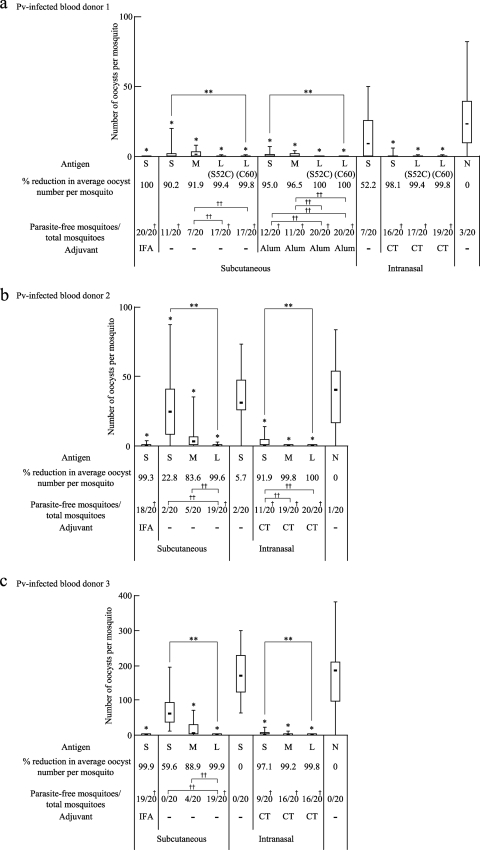Fig. 6.
TBV efficacies of the tricomponent complexes. The antisera (i.e., 1/2 dilution of the pooled antisera) obtained from the immunized mice in the experiments described in the legend to Fig. 4 were analyzed for TBV efficacy. The data are expressed as median numbers of oocysts per mosquito (bars within boxes), with 25% and 75% quartiles (the boxes) and ranges (whiskers above and below boxes). The percentage of reduction was defined as the reduction in the average number of oocysts for each group from that for the unimmunized control group. The number of parasite-free mosquitoes compared with the total number of mosquitoes (20 mosquitoes) is also provided. Experiments were performed three times using different blood samples from three donors. A Plasmodium vivax-infected blood sample from donor 1 (a) was used to evaluate the TBV efficacies of the TB-based constructs, and P. vivax-infected blood samples from donors 2 and 3 (b and c) were used for the COMP-based constructs. Asterisks and daggers indicate significant differences from the unimmunized control group by the Wilcoxon-Mann-Whitney test (*, P < 0.001), among the three groups indicated [S, M, and L(S52C) or L(C60) for the TB-based constructs, or S, M, and L for the COMP-based constructs] by the Kruskal-Wallis test (**, P < 0.001), from the unimmunized control group by the χ2 test (†, P < 0.005), and between the two groups indicated by the χ2 test (††, P < 0.005). The data for 10 immunization groups (8 S groups and 2 N groups) analyzed using blood samples from donors 2 and 3 were the same as those derived from a previously published study (22).

